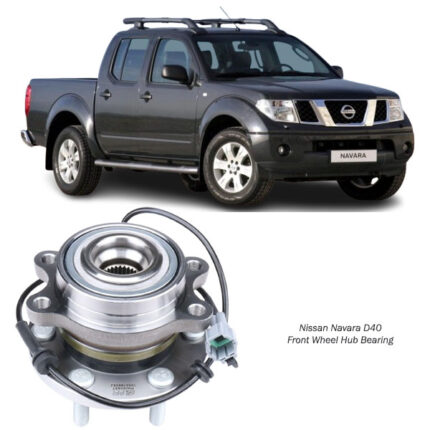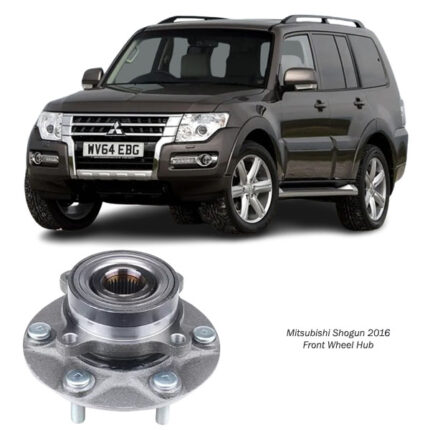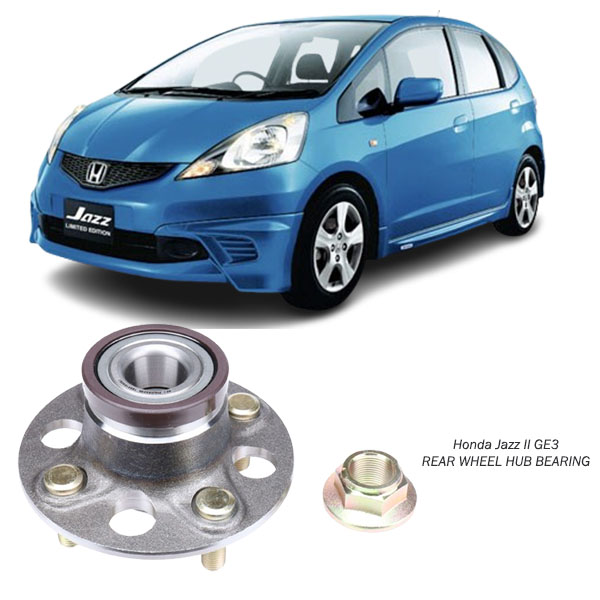-10%
Get Honda Jazz II GE3 Rear Wheel Hub Bearing PHU56803K in Kenya
The rear wheel hub bearing is a crucial component in the wheel assembly of a vehicle, enabling smooth rotation of the wheels while supporting the weight of the vehicle. It plays a pivotal role in ensuring safe handling, reduced friction, and a quiet ride. This article explores the functions, benefits, types, common failure symptoms, and maintenance tips for rear wheel hub bearings.
Functions of a Rear Wheel Hub Bearing
- Facilitating Wheel Rotation
The rear wheel hub bearing allows the wheels to spin freely with minimal friction. Its smooth operation ensures consistent wheel movement, vital for the vehicle’s performance and efficiency. - Supporting Vehicle Load
The bearing helps distribute the vehicle’s weight evenly across the wheel assembly. It provides stability, even under dynamic conditions like turning or braking. - Reducing Friction
The bearing minimizes friction between the rotating wheel and stationary axle components. This reduces wear on other parts and enhances fuel efficiency. - Maintaining Alignment
Rear wheel hub bearings play a role in maintaining proper wheel alignment, ensuring stability and handling. Misaligned wheels can compromise safety and tire longevity. - Enhancing Safety Systems
Modern wheel hub bearings often integrate sensors for ABS (Anti-lock Braking System) and traction control systems. These sensors provide real-time data to ensure safe braking and vehicle stability.
Benefits of a Rear Wheel Hub Bearing
- Smooth and Quiet Ride
A properly functioning rear wheel hub bearing eliminates grinding and humming noises, providing a quieter driving experience. - Improved Handling
Bearings ensure that the wheels rotate smoothly and stay properly aligned, contributing to better steering response and overall vehicle handling. - Enhanced Durability
High-quality wheel bearings are designed to withstand extreme loads and harsh conditions, ensuring longevity and reliability. - Reduced Fuel Consumption
By minimizing friction, wheel hub bearings improve rolling efficiency, leading to better fuel economy. - Safety Integration
Bearings with integrated ABS sensors enhance braking performance and stability control, improving overall safety on the road.
Types of Rear Wheel Hub Bearings
- Ball Bearings
Ball bearings are versatile and commonly used in vehicles. They can handle both radial (vertical) and axial (side) loads, making them suitable for many applications. - Tapered Roller Bearings
These bearings are designed to handle higher loads, especially in heavy-duty or off-road vehicles. They are ideal for applications where both radial and axial loads are significant. - Roller Bearings
Roller bearings offer excellent load capacity for radial forces but are less effective at handling axial loads. They are often used in larger vehicles. - Sealed Bearings
Many modern vehicles use sealed bearings, which come pre-lubricated and protected from contaminants like dirt and water. They require no maintenance but must be replaced as a whole unit when worn out. - Hub Bearing Assemblies
Hub assemblies integrate the bearing, hub, and other components into a single unit, making installation easier and ensuring optimal performance.
Symptoms of a Failing Rear Wheel Hub Bearing
- Unusual Noises
Grinding, humming, or rumbling noises coming from the wheel area are common signs of a failing bearing. The noise often gets louder with increased speed or during turns. - Vibration in the Cabin or Steering Wheel
Excessive wear in the bearing can cause vibrations that are felt in the cabin or through the steering wheel, especially at higher speeds. - Uneven Tire Wear
A damaged bearing can cause the wheel to tilt or wobble, leading to uneven tire wear and reduced tire lifespan. - ABS Warning Light
Bearings with integrated ABS sensors can trigger the warning light if the sensor fails or becomes damaged due to a faulty bearing. - Loose or Wobbling Wheels
A failing wheel hub bearing can cause the wheel to feel loose or unstable, which is especially noticeable during sharp turns or sudden braking. - Increased Rolling Resistance
Excess friction in a failing bearing can lead to reduced fuel efficiency and a noticeable drag while driving.
Causes of Rear Wheel Hub Bearing Failure
- Contamination
Dirt, water, and road debris can infiltrate the bearing, causing corrosion and accelerated wear. - Overloading
Excessive weight from heavy loads or towing can strain the bearings, reducing their lifespan. - Improper Installation
Incorrect installation can lead to misalignment, uneven load distribution, and premature bearing failure. - Lack of Lubrication
Bearings require proper lubrication to function effectively. While sealed bearings are pre-lubricated, open bearings must be regularly maintained. - Driving Conditions
Frequent exposure to potholes, rough roads, and extreme weather conditions can subject the bearing to stress and damage.
Maintenance Tips for Rear Wheel Hub Bearings
- Regular Inspection
Periodically inspect the wheel bearings for signs of wear, corrosion, or damage. Look for unusual noises, vibrations, or play in the wheel. - Monitor Tires and Alignment
Uneven tire wear or alignment issues can indicate problems with the wheel hub bearing. Regularly check and rotate tires to extend their lifespan. - Keep Bearings Clean
For non-sealed bearings, ensure they are clean and free from dirt or debris. Use high-quality grease to maintain lubrication. - Replace as Needed
Replace worn or damaged bearings promptly to avoid further damage to the wheel assembly or surrounding components. - Use OEM Parts
Always opt for original equipment manufacturer (OEM) bearings or high-quality aftermarket parts to ensure reliability and longevity. - Avoid Overloading
Be mindful of the vehicle’s load capacity and avoid carrying excessive weight, which can strain the bearings. - Drive Carefully
Avoid hitting potholes or curbs at high speed, as sudden impacts can damage the bearing or its housing.
Replacing a Rear Wheel Hub Bearing
- Tools and Preparation
- Use a jack and jack stands to safely lift the vehicle.
- Ensure you have the necessary tools, including a socket set, torque wrench, and a hub puller.
- Remove the Wheel
- Loosen the lug nuts and remove the wheel to access the hub assembly.
- Disassemble the Brake System
- Remove the caliper and brake rotor to expose the wheel hub assembly.
- Detach the Bearing
- Use the appropriate tools to remove the old bearing from the hub assembly. This may involve unbolting the bearing or pressing it out.
- Install the New Bearing
- Position the new bearing in the hub assembly and secure it according to the manufacturer’s specifications. Ensure proper alignment to avoid premature wear.
- Reassemble Components
- Reinstall the brake rotor, caliper, and wheel. Tighten all bolts to the recommended torque.
- Test the Vehicle
- Lower the vehicle, test drive it, and listen for any unusual noises or vibrations to ensure the bearing is installed correctly.
Conclusion
Rear wheel hub bearings are vital for the safe and efficient operation of your vehicle. They facilitate smooth wheel rotation, reduce friction, and contribute to overall stability and performance. Regular maintenance, careful driving, and timely replacement of worn bearings are crucial to avoid costly repairs and ensure a comfortable driving experience. By understanding the functions, benefits, and maintenance of rear wheel hub bearings, you can keep your vehicle running smoothly and safely for years to come.
Follow us on Facebook for more parts.



